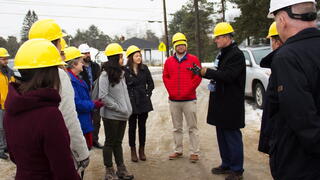This FEMA document provides advice to state and local officials on disaster response and recovery during the current coronavirus pandemic.
As local governments continue COVID-19 recovery operations, new emergencies emerge--from flooding to hurricane season. Here are some resources to help you prepare.

Three experienced managers offer their insights on encouraging a work culture built on trust by asking three questions that help guide managers in performing this important work.

ICMA announces this semester's recipients of the Local Government Early Career Service Certificate.

Consider these three steps for managing risks when reopening public amenities.

The current worldwide health crisis has exposed the underlying and sometimes unflattering condition of local government service levels and finances.

In this Q&A, Chuck Thompson of the International Municipal Lawyers Association helps answer questions ICMA members have on reopening public facilities.

Humanness is showing up right now as resiliency fatigue.
PowerPoint/PDF Slides presentation that accompanied the May 14 Webinar: Engagement During a Crisis: Local Government's Response to COVID-19
